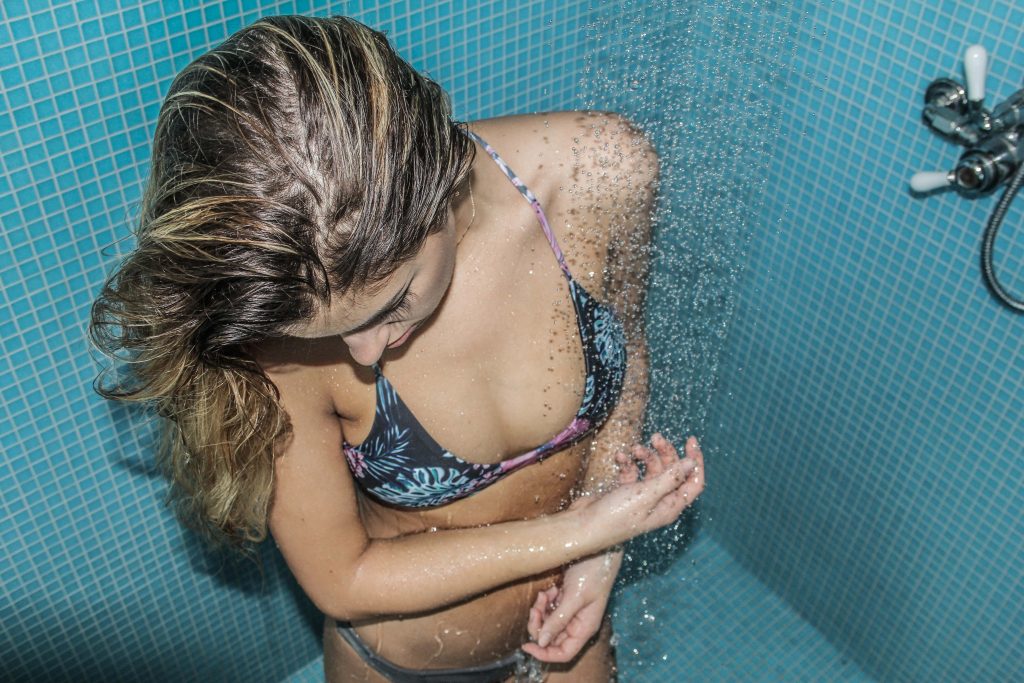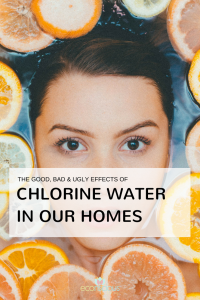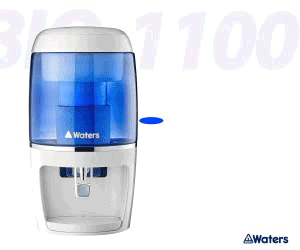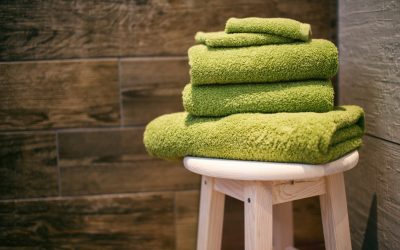Chlorine Water in our Homes – the Good, Bad & Ugly Effects
In my last blog, I spoke about the importance of scrutinising the skincare products you use especially if you are prone to skin allergies and irritations such as eczema. This week I want to take a look at chlorine water in our homes and how that may affect your body. If you suffer from eczema, dry itchy skin, damaged and brittle hair or flaky scalp after showering or taking a bath you really need to look at removing chlorine from your water.
Why is chlorine water in our homes?
Long before reaching our homes chlorine is added to our water supply to kill pathogenic bacteria, parasites and viruses and it does a brilliant job. It keeps us free of hideous waterborne diseases. Sufficient quantities are added to ensure it’s still doing a great job by the time it arrives at our kitchen sinks. Its taste and smell are very distinctive. Many European countries actually use ozone instead of chlorine to achieve the same end result without the harmful side-effects.

So what’s the problem?
The downside is, chlorine is a severe skin and lung irritant because it is a very strong oxidant (the opposite of the good ones; anti-oxidants). Hence, it is really good at drying out and ageing our skin. If you have a child with eczema you will notice they are often much worse after getting out of a shower or swimming pool. You can also inhale chloroform (a dangerous by-product of chlorination) when you take a hot shower or bath. The same can be said of chloramines – the dreadful combination of chlorine and ammonia in some domestic water supplies.
Interestingly, inhalation and skin contact are likely to be the primary routes of body exposure to chlorine water in our homes, not ingestion through drinking your tap water as you might expect.
Most showers are enclosed and the warm water tends to open pores. The hotter the water, the more chlorine is vaporised and absorbed. In fact, the chlorine vapour from a 10-minute shower is understood to give you ten times more exposure to chlorine than drinking 8 glasses of water! One study found less chemical exposure from ingesting chlorinated water than from showering or even washing clothes in a machine.
Chlorinated water and its potentially harmful by-products such as chloroform have also been linked to cancer of the bladder, liver, stomach and colon.
How to limit or prevent chlorine water in your home
A ‘whole of house’ filter with a carbon block will remove chlorine from your entire home: tap water, shower, bath, washing machine and dishwasher. These are expensive, as they are used to remove much more than just chlorine.
If you don’t have a ‘whole of house’ filter or aren’t planning on getting one, you can easily and cheaply buy a separate chlorine filter for your shower and/or bath. These filters use a medium called KDF (Kinetic Degradation Fluxion) to remove the chlorine and are readily available in hardware stores and online. They usually remove some other contaminants too. They are easy to self-install, cost less than $100 and need to be replaced about every 12 months. I wouldn’t get too excited about additional features you may be sold such as “Vitamin C therapy” unless it can be proven through independent certification that the vitamin C will last the lifetime of the filter. We use this shower filter. Make sure you compare the life of the filter with your average shower use. Most will last about 5500 litres but this could be 6 months for some or 12 months for others depending on your shower-head flow rate, the frequency of your showers and family number.
As I said, many studies have demonstrated that we inhale and absorb way more chlorine through showering and bathing than we do from ingesting drinking water. I, therefore, recommend that you prioritise the shower/bath filter over a drinking water filter. There are many other reasons to filter your drinking water of course but if money is tight and skin or respiratory problems are an issue for your family, do that first.

Good bath filters are more difficult to find. I recommend and use the Sprite Bath Filter (~$100). The filter media is KDF Chlorgon, it is high-quality solid brass-chromed with a 12-month filter cartridge. It removes total chlorine in addition to removing hydrogen sulphide, iron oxides, dirt, sediment and odours. Replacement cartridges ($50) can be bought in bulk to reduce cost and last about one year. There are other plastic bath filters on the market which hang under your faucet but given plastics leach, especially when exposed to hot water, I don’t recommend them. Some brass filters might also contain lead so you should ask questions about this too.
Whilst chlorine is easy to filter, it is almost impossible to remove chloramines completely using just a shower or bath filter as the hot water and rate of flow is too much to handle. For chloramines, you really need to install a whole-house filter specifically designed to remove them as ordinary carbon filtration will not work. However, you can substantially reduce it with proper treatment. If someone says they can remove 100% chloramine you need to quiz them hard. Insist on a cartridge that is specifically designed to remove chloramines and double-check the specification sheet for the cartridge.
Whatever water filter you choose, you always want to check that your filter has been independently tested to do what it claims and ideally certified to NSF/ANSI Standards. You will want to know for how many litres the filter will remove the concerned contaminant (for example, it is useless if after only four months of use it no longer removes the chlorine and you believe otherwise).
Whilst I love the convenience of a water filter, there is a hack to remove chlorine from your bath and it’s called Vitamin C. Add a teaspoon or two to your bath water and it neutralises the chlorine. Either sodium ascorbate or ascorbic acid will work. Personally, I prefer the filter as it saves messing around with Vitamin C at every bath time and guesswork as to the correct quantities to use.
If none of these options appeals to you, I’m afraid the only other way to reduce your exposure is to either give the shower a miss completely or keep them short and cold. To most of us, I’d imagine neither of those options is all that appealing!
Removing chlorine from your water is one simple step to optimising your health. I’d love to know how you go, contact me with any questions or to book in for one of my consultations or healthy home audits.
Want regular eco-tips for optimising your living environment? Join our Facebook Group!

This blog post contains affiliate links, which means that if you buy one of the products I recommend through a link here, I earn a tiny commission. I only recommend products that I, myself, use. I will never recommend to you something that I haven’t tried and tested! Please feel free to send me a message if you want to know more about any of the products I share on the blog.
Related Posts
The Best Natural Pillows For Better Sleep
If you truly want to make a simple upgrade in the bedroom that will change your health then keep reading to find the best natural pillows for better sleep
Why You Should Have a Home Sauna for Better Health
Quite simply if there was a pill that did ALL the things that research is showing us saunas do, you would be taking it. Here’s why and my recommendations
Myth Busting: How Effective Are Air-Purifying Plants?
It’s a common belief that air-purifying plants are an effective way of removing VOCs and toxicants from the air in your home. I’m afraid not, here’s why…






